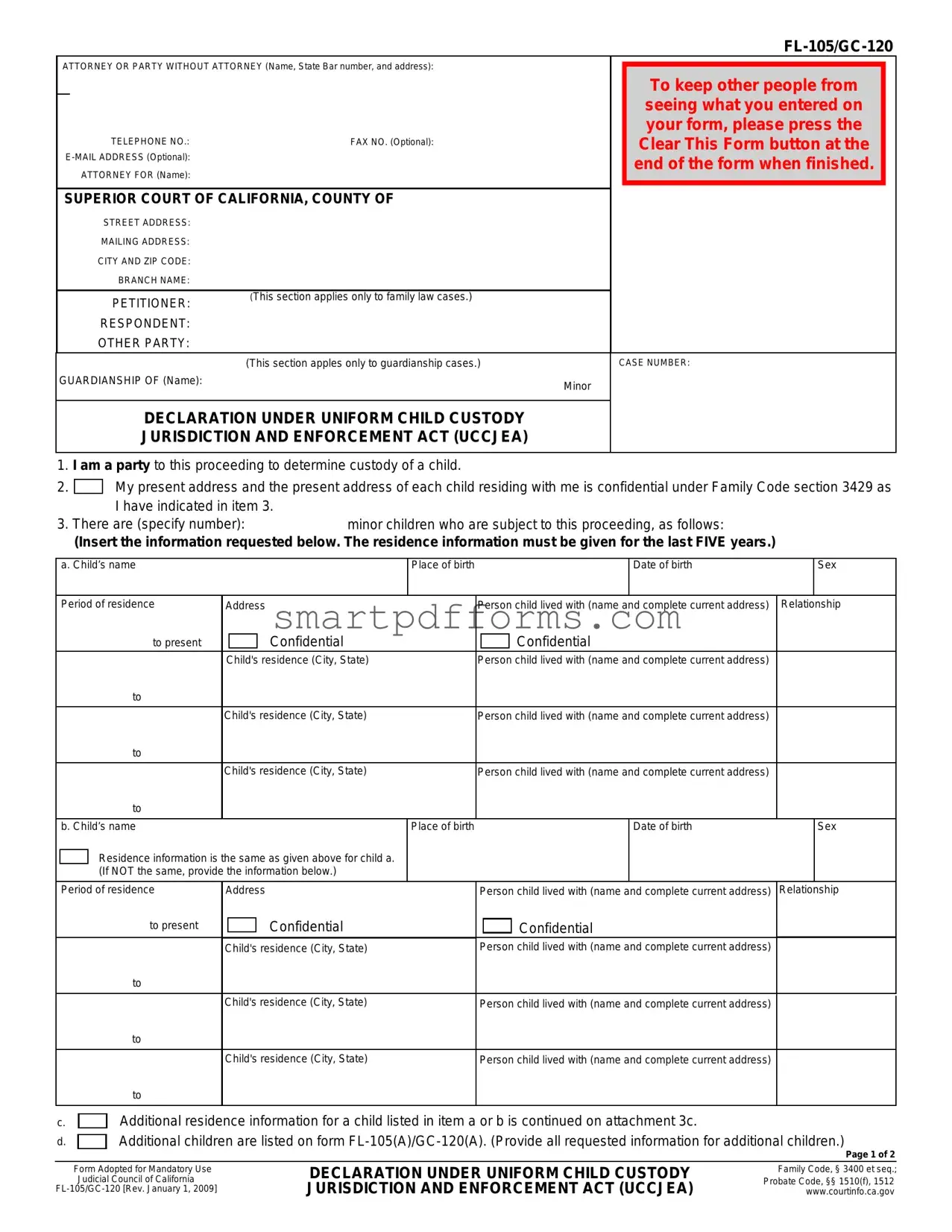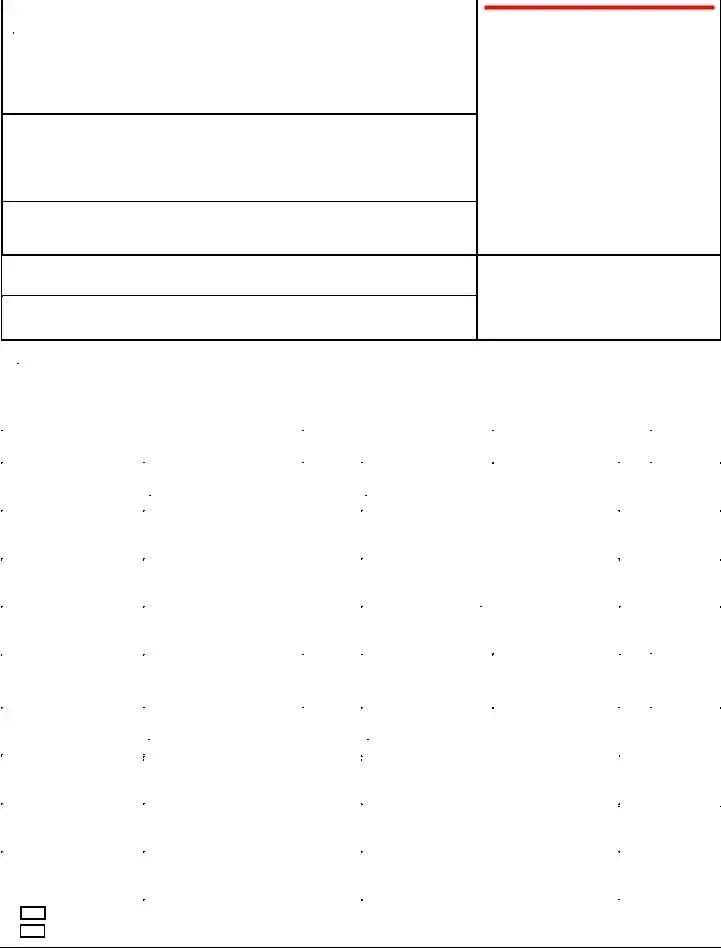The FL-105/GC-120 form is a crucial document used in the California family court system, particularly in cases involving child custody and guardianship. Officially titled "Declaration Under Uniform Child Custody Jurisdiction and Enforcement Act (UCCJEA)," this form serves as a declaration from a party in a proceeding about the custody of a child or children. It requires detailed information about the child's or children's residency for the past five years, aiming to prevent conflicting custody orders between states and ensuring the child's best interests are considered in custody arrangements. The form includes sections for the petitioner, respondent, and other parties involved in family law or guardianship cases. Additionally, it asks for information on existing court cases or custody proceedings in any jurisdiction concerning the child, details about any domestic violence restraining orders in effect, and inquiries about anyone who claims custody or visitation rights who isn't a party to the current proceeding. Furthermore, the declarant must disclose their ongoing duty to inform the court of any future custody proceedings related to the child. This comprehensive approach ensures the court has all necessary information to make informed decisions regarding a child's custody and welfare.






 Family
Family


 Other
Other
 Yes
Yes